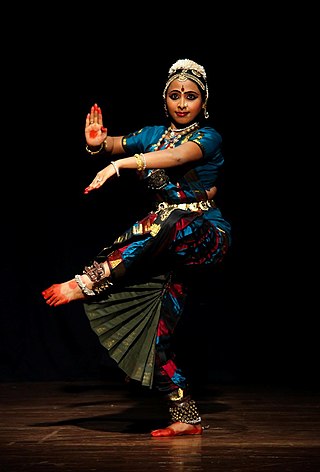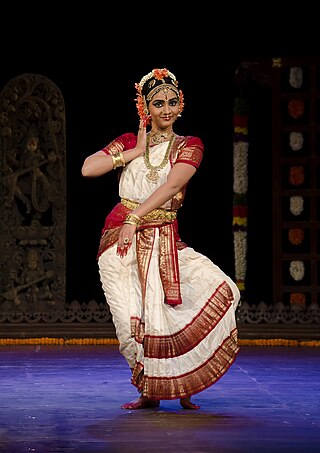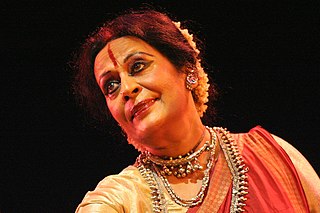Career
Ester sought out formal instruction from a local dance teacher, by the time she graduated from high school, in the 1910s, her passion for dance, now well-established, led her to engage a local man (a Russian immigrant) to teach her ballet. Soon, the pair was performing a revue of "international" dances at local cabarets and small theaters around Minneapolis. Using the stage names "Rita Cassilas" and "Todi Ragini" Sherman spent her nights performing an array of Russian folk dances and self-styled Greek-and Egyptian-themed pieces, and her days studying Indian history and culture at the University of Minnesota at St Paul (most likely as a non-matriculating student). [3]
In 1922 she moved to New York with her husband Bajpai. In New York, she found some work in silent films, but her career turned a corner on 28 April 1922, in a solo performance, onstage, at Manhattan's Greenwich Village Theater. There, dancing supposedly "authentic Indian entertainments", she made her debut as "Ragini Devi" who, she told her American audiences, was a Kashmiri Hindu born, raised, and trained to dance in India. [4] From then on, she was known, on stage and off, as Ragini Devi (although in India, she never passed for anything other than a Westerner—albeit one with the "instincts and attitudes of an Indian"). [3]
Between 1922 and 1930, her self-styled performances earned praise from American dance critics and exotica-seekers alike. In 1928, she published her pioneering first book, "Nritanjali: An Introduction to Hindu Dancing", which earned critical acclaim in the U.S., with June 17, 1928's edition of The New York Times calling it "a happy circumstance". [1] as well as in India. In 1930, seizing her new international fame, Ragini Devi decided to travel to India, which she had been long eager to do. Committed, above all else, to dance, Devi left her husband and set sail for South India. Where, upon arrival, she gave birth to her only daughter, Indrani.
Devi travelled, seeking out teachers, eager to study Indian dance at its source. In Madras she studied Sadir (also known as Bharatanatyam) with ex-devadasi Mylapore Gowri Ammal of Kapaleeswarar Temple. [5] [6] and, travelling to the Kerala, after she received an invitation from the Maharaja of Travancore to dance in the Arts Festival. She got an opportunity to meet poet Vallathol. She became the first woman to study Kathakali at the legendary Kerala Kalamandalam. [7] It is here where she met young and handsome Gopinath, the Kathakali dancer from Travancore, who agreed to be her dance partner in her tours. [8] Eager to join the young, nationalism-inspired effort to revive and reinvent indigenous Indian arts in a national tour aimed at introducing audiences in the rest of India to Kathakali. [9] Shortening the length of the dances, streamlining the costumes, and staging them on an indoor, proscenium stage, Ragini Devi and Gopinath gained prominence by transforming Kathakali into evening entertainment for urban theatergoers. From 1933 to 1936 they toured India, presenting their adapted Kathakali "dance dramas" to entranced audiences and rave reviews.
In 1938, Devi set sail (without Gopinath) for a European tour which had barely begun when the escalation of European hostilities forced her to return, with her daughter, to the United States. In New York, Sherman established the India Dance Theatre, a dance school and company on West 57th St where she profited from the growing American rage for "ethnic" and "exotic" dance. In 1947 she travelled back to India (where her daughter, now married, was living) and in 1948 won a Rockefeller Foundation grant to support her ethnographic work. For the next several years she travelled the young nation, documenting regional classical and folk dance forms.
Meanwhile, carrying on the family torch, Indrani became the first-ever "Miss India" in 1952. Soon she was one of India's best-loved cultural ambassadors, performing the dances her mother had fought to preserve before world leaders such as Mao and John F. Kennedy. Devi half-jokingly lamenting this state of affairs, "My daughter has already pushed me to the background. There was a time when I was known in my own right!" [10] Throughout the late 1950s and 1960s, Devi lived in Bombay, compiling the results of her research. In 1972 she finally saw "Dance Dialects of India" published in 1978.
Personal life
Esther met Ramalal Balram Bajpai (1880–1962), [11] a young scientist from Nagpur, India and an activist for Indian independence. Bajpai was wanted by the British for defacing a public statue of Queen Victoria. He avoided capture and escaped to the United States where, in 1916, he enrolled at the University of Minnesota. In 1921, against her parents wishes, Sherman married Bajpai in a civil ceremony in Wilmington, Delaware. Esther embraced Hinduism upon her wedding and took the name "Ragini Devi". [12] and together they moved to Brooklyn, New York.
The couple moved to India in the 1920s. Their daughter, Indrani Bajpai, was born on 19 September 1930 in Madras. [13] Who also studied to learn Bharata Natyam, Kuchipudi, Kathakali and Odissi dance. Indrani was crowned Miss India in 1952, and, at the age of 15, eloped to marry Habib Rahman (1915–1995), a Bengali-Muslim architect, in 1945. The couple had a son, artist Ram Rahman, and a daughter, Sukanya Rahman (Wicks), [13] who would also dance with mother and grandmother. Her grandsons are Wardreath and Habib Wicks.












